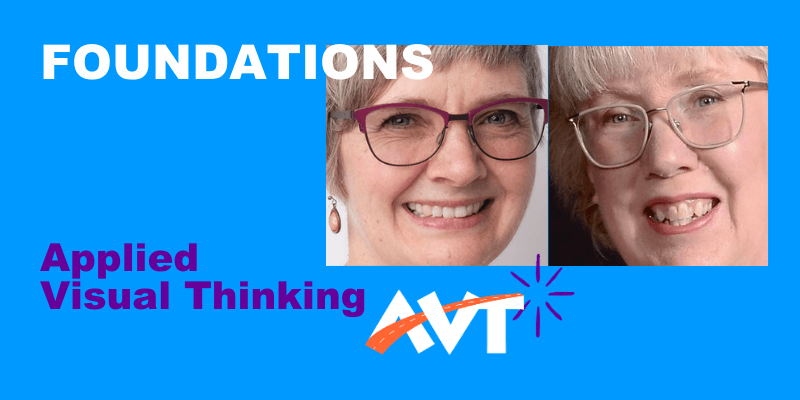Draw with Your Eyes!
The Art of Applied Visual Thinking
Learning to think visually is like learning a new language. When learning a new language, you begin by learning the sounds, connecting the sounds to make words, the words into phrases, and phrases into sentences. You can take a similar approach with visual thinking – learning the simple shapes, connecting the shapes to make icons, associating the icons to words, ideas, or metaphors, and creating charts, maps, and diagrams to make meaning, increase understanding, and facilitate communication.
Learning to SEE is an essential step in developing your visual thinking skills. However, there are times when you don't have the opportunity to bring out your pen and paper and draw what you see. Moments spent standing in line at the grocery store, waiting in the carline at school, for your coffee order, or for a meeting to start are precious. Don't pass the time scrolling the news, looking at funny pet photos on Instagram, or playing with your apps. Use it to …
Drawing with your eyes helps build visual thinking skills and visual vocabulary by translating what you see in 3D into simple shapes and arranging them into icons. The next time you're standing in line or waiting for a meeting to start, pick out an visually interesting object like the broccoli you're planning to have for dinner, then take a long, close look at the thing and try one or two of the following simple exercises.
- Slowly move your eyes along the outside edges of the object while creating a contour line drawing in your mind's eye.
- Use the 5 shapes from Dan Roam's Visual Alphabet to identify the simple shapes that make up the object. Start with the most prominent shape and work your way down to the minor details. Notice where the shapes overlap and connect with each other. Compare the size of each shape to the others that make up the article.
- Take a cue from one of the exercises in Dr. Betty Edward's classic book "Drawing from the Right Side of the Brain" and notice negative spaces in and around the item.
- Practice a bit of chiaroscuro by observing the size, shape, and placement of the darkest and lightest areas of the object.
- Decide what the object's essence is, something children's author and illustrator Shoo Rayner calls the "Nuss." What elements make the thing the thing?
- In your mind's eye, turn the object into an icon. How could you draw it with the fewest possible lines? Bonus points: what words, phrases, or ideas might you represent with your new icon?
Drawing with your eyes is a fast, fun way to be present, see the details of an object, figure out how you might draw it, and build your visual vocabulary.
Download a free copy of the handout and try your hand at
drawing with your eyes!
Want to learn more?
Our FOUNDATIONS course is designed to give you and your teams the easy-to-learn, fast to implement visual tools so you can draw anything and expand your visual vocabulary














